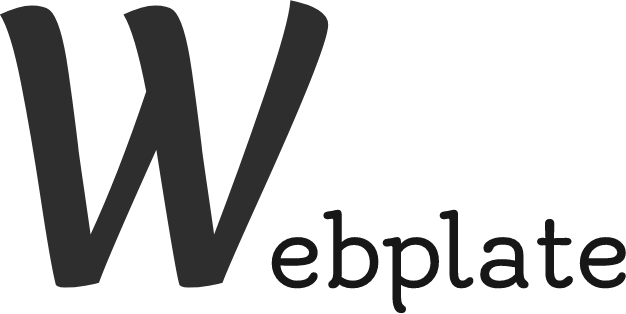Rarely do you start a SaaS because you like marketing. Unless you are a marketer by trade, you’re probably not very good at it either.
Whether we like it or not, marketing is a big part of building a SaaS product. It’s a big part of building any business actually. You can build the greatest product ever, but if no one knows about it, it’s useless.
That’s the harsh truth that a lot of developers and SaaS creators realize at some point in their journey.
The good news is that a SaaS marketing plan doesn’t have to be complicated. By narrowing down your strategy to a couple of different tactics, as opposed to a million different tactics, you give yourself a better chance of successfully getting your SaaS product into the eyes and hands of your ideal customers.
Below, I’ll go through 3 marketing tactics that you can incorporate into your SaaS marketing plan today. These are tactics that have been proven to grow SaaS products in the past.

SEO
Find keywords for homepage
Your homepage will be the most important page on your site, because it will contain the most information about what your product is, and how it will help your ideal customer. So it’s important to have this page ranking on search engines, to make it visible to more people and increase your overall reach.
Using a tool like ahrefs, find keywords related to your product. Just enter a keyword that you would like to rank for, and see how competitive they are and also how often that term is being searched for.
The lower the ‘KD’ number and the higher the ‘Volume’ number, the better. Find one or two keywords that you believe you will be able to rank on search engines for, and optimize your entire homepage for it.
We’ll talk about backlinking later, but this is a good start to getting your page in the top results on search engines.
Find blog topics
Creating blog posts not only helps to establish authority and influence, they can also help with SEO. By having more of your blog posts rank high on search engines, you’re increasing the amount of reach your site has. The more people that visit your site, the more people will convert and become paid customers.
If your industry or niche has a lot of keywords that are highly competitive, it’s best to target low competition keywords first. Lower competition typically means lower search volume as well so you can’t expect a ton of new traffic for these posts, but they’re a starting point. By ranking high for lower competition keywords, you start to build trust with search engines. So that when you start targeting higher competition keywords, you have more leverage.
You can use ahrefs again to find low and high competition keywords.
Acquire backlinks
Search engines are very secretive about their algorithms, especially Google. But one thing we know for sure is that backlinks play an integral role in how our pages rank.
Backlinks are links from other websites that point to a page on our website.
There are a lot of different ways we can get these backlinks. One of the most popular and effective ways is to write guest blog posts on websites that are related to your niche or industry.
Reach out to relevant brands and companies and let them know that you’d like to write a blog post for them. You can pitch a couple of different ideas to see which they’d like best. In the guest post, be sure to include a link to your homepage and to one of your own blog posts.
Creating ‘linkable assets’ are another great way to get links back to your site. Linkable assets include infographics, videos, calculators, or anything else that people will naturally want to link to. When other brands or companies in your industry are writing blog posts they will want to link to these assets because they provide value in an entertaining way.
ProductHunt / BetaList
When you are ready to launch, or if you just recently launched, putting your SaaS product on ProductHunt and BetaList can help boost your SEO.
Both these platforms have high domain authorities, so having a link on these platforms pointing back to your website will improve your own domain authority.
Create company page
Under your personal account, you can create company pages. These pages give LinkedIn users a better understanding of what your business is about.
Use this company page to follow hashtags related to your product, and comment on posts from people that you believe would benefit from your SaaS.
It’s also important to post content that would benefit your ideal customer, on a regular basis to stay top-of-mind.
Create a group in your niche
From your personal account, create a group that’s centered around your niche and invite members to join. These invites should be personalized to each individual. Mention how the group would benefit from their input, and how they would benefit from joining the group
As you get more members, post valuable content, ask questions, and share your experiences. Once in a while, you can invite members of the group to follow your company page. When they do, they’ll see that you offer a software that can potentially help them in their business.
Cold Email
Create a list
Take some time to do some research, and compile a list of people you’d like to become a customer of your product. People that you believe will benefit from using your SaaS. You can use a platform like Hunter to help you find the email addresses of your ideal customers.
Once you have the list, create a Google Sheets document to keep track of who you want to email, who you’ve emailed already, and responses. It’ll help keep things organized, and you’ll know when and who to send follow-up emails to.
Use templates
You will have no problem finding cold email templates online. However these templates should only be used as a starting point. Each email you send should be unique and personalized to the recipient.
Clearly explain how your product will help them run their business more effectively. You want to keep this first email as short and direct as possible. You should also include a call-to-action to make it easier for them to take the next step. That can include getting on a call, signing up for a free trial, or requesting a demo.
Follow up
Not getting a response the first time doesn’t necessarily mean they aren’t interested. People get busy and may sometimes just miss your email or not have the time to check. Send a follow up email after about a week or two. You’ll be able to find templates for follow up emails as well, but just like the first email, it should be personalized.
If they don’t respond to the second email, try connecting with them on social media. Give them a follow and comment on a couple of their latest posts.
If you still don’t hear anything from them you can send a third follow up after a couple of weeks. If they still don’t respond, it’s probably time to move on to the next prospect.
SaaS Marketing Plans Don’t Have To Be Boring
While a lot of these tactics are pretty standard for growing a SaaS business, your SaaS marketing plan doesn’t have to be the exact same as what everyone else is doing.
You can add your own twists and flavor into these tactics. Incorporate your own personality, and let your company’s brand shine.
You don’t build a SaaS because you like to market. You build a SaaS because you want to solve a problem in a market. But in order to solve that problem in the market, you have to market.
Are you looking for a SaaS website template? Webplate is home to HTML templates, and has a catalog of SaaS templates that you can use for your marketing website.


